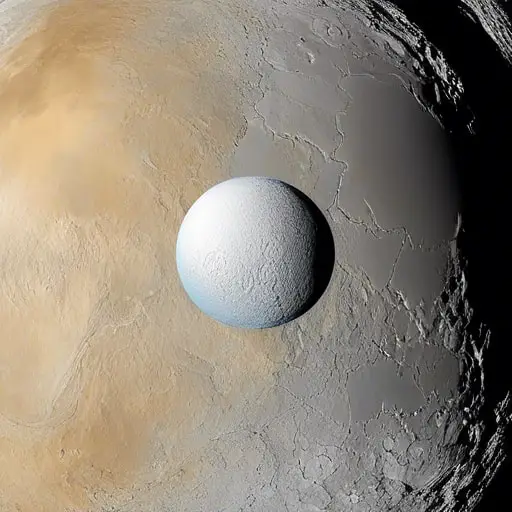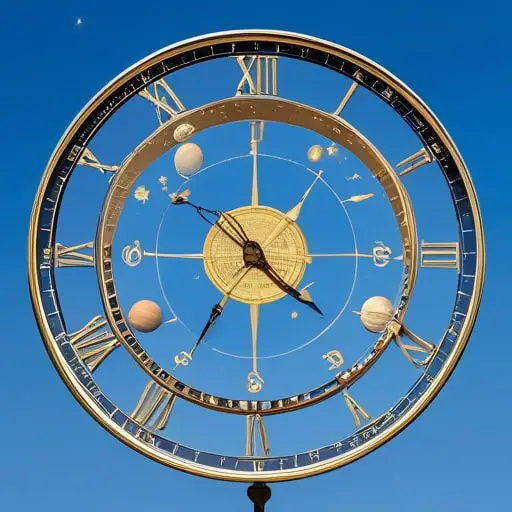Why Is Pluto a Dwarf Planet?
Pluto, the celestial object once considered as the ninth planet of our solar system, now holds the distinguished title of a dwarf planet. Its reclassification raised eyebrows and sparked curiosity among astronomers and space enthusiasts alike.
But why exactly is Pluto a dwarf planet? Well, let’s embark on a fascinating journey to uncover the reasons behind this cosmic decision, exploring the historical classification of Pluto, the defining characteristics of a dwarf planet, and the factors that led to its reclassification.
Brace yourself for a captivating exploration of Pluto’s unique orbital characteristics, the ongoing debate among astronomers, and the implications of its dwarf planet status.
Get ready to delve into the mysteries of Pluto as we unveil the continued exploration of this enigmatic celestial body.
Key Takeaways
- Pluto was reclassified as a dwarf planet by the International Astronomical Union (IAU) due to its failure to clear its neighboring region of other objects.
- The IAU’s new definition of planets and the discovery of similar worlds in the Kuiper Belt were the factors behind Pluto’s reclassification.
- Pluto has unique orbital characteristics, such as an elongated and inclined orbit, which differ from other planets with nearly circular and aligned orbits.
- The debate among astronomers about whether Pluto should be considered a dwarf planet or the ninth planet reflects the evolving nature of our understanding of the solar system.
Historical Classification of Pluto
Pluto’s historical classification as a planet underwent a significant change when the International Astronomical Union reclassified it as a dwarf planet due to its failure to meet the criteria for a full-sized planet.
The decision was made based on the IAU’s three criteria: a planet must orbit the Sun, have sufficient mass to assume a nearly round shape, and clear its orbit of other objects.
Pluto failed to clear its neighboring region of other objects, leading to its reclassification as a dwarf planet. This reclassification resulted in eight planets in our solar system instead of the previous nine.
The reclassification was initiated by the discovery of similar worlds in the Kuiper Belt, where Pluto resides. The New Horizons mission provided valuable data and images of Pluto and its moons, expanding our knowledge of the outer solar system.
Prior to its reclassification, Pluto was discovered in 1930 by Clyde Tombaugh at the Lowell Observatory. It was initially considered the ninth planet but is now recognized as a dwarf planet.
The reclassification highlights the importance of scientific advancements and the refinement of celestial coordinates.
Characteristics of a Dwarf Planet
The reclassification of Pluto as a dwarf planet necessitates an exploration of its characteristics, which distinguish it from full-sized planets.
A dwarf planet, like Pluto, is a celestial body that orbits the Sun directly. Its shape is controlled by gravitational forces, resulting in an ellipsoid shape. However, one key characteristic of a dwarf planet is that it hasn’t cleared its neighboring region of other objects.
In the case of Pluto, it meets the first two criteria set by the International Astronomical Union for a full-sized planet, being in orbit around the Sun and having sufficient mass for hydrostatic equilibrium. However, it fails to clear its orbit’s neighborhood.
Additionally, Pluto’s surface is composed of a mantle of water ice, and it has five known moons. These characteristics, along with the presence of surface ices, set dwarf planets like Pluto apart from their full-sized counterparts.
Factors Behind Pluto’s Reclassification
The reclassification of Pluto as a dwarf planet was based on several factors that were contextually relevant at the time.
- Failure to clear its neighboring region: Despite meeting two of the three criteria for defining a full-sized planet, Pluto failed to clear its neighboring region of other objects. This was a significant factor in its reclassification as a dwarf planet.
- New definition by the IAU: The International Astronomical Union (IAU) now designates only the rocky worlds of the inner Solar System and the gas giants as planets. This resulted in the reclassification of Pluto as a dwarf planet.
- Discovery of similar worlds: The discovery of similar worlds in the Kuiper Belt, along with the need for a clear definition of planetary status, also contributed to Pluto’s reclassification.
These factors, along with the resistance within the astronomical community and mixed public reception, led to the reclassification of Pluto as a dwarf planet.
Pluto’s Unique Orbital Characteristics
As we shift our focus to Pluto’s unique orbital characteristics, it’s important to examine how these factors contribute to our understanding of this dwarf planet’s place in the solar system.
Pluto, once considered the ninth planet, was reclassified as a dwarf planet in 2006 due to its unique characteristics. One of these characteristics is Pluto’s elongated and inclined orbit.
Unlike the other planets, which have nearly circular orbits aligned with the plane of the solar system, Pluto’s orbit is highly elliptical and tilted.
This means that at times, Pluto’s orbit brings it closer to the Sun than Neptune, making it the eighth closest planet to the Sun.
Understanding these unique orbital characteristics is crucial for accurately classifying Pluto as a dwarf planet and placing it in the appropriate context within our solar system.
The Debate Among Astronomers
Astronomers engage in a lively and ongoing debate regarding the classification of Pluto as a dwarf planet within our solar system. Here are three key points that fuel this debate:
- Pluto’s classification: Astronomers debate whether Pluto should be considered a dwarf planet or the ninth planet in our solar system. While it meets two of the International Astronomical Union’s (IAU) criteria for a full-sized planet, it fails to clear its neighboring region of other objects, leading to its reclassification as a dwarf planet.
- Historical significance: The discovery of Pluto in 1930 at the Lowell Observatory sparked excitement, considering it as the ninth planet. However, subsequent advancements in celestial observations and the discovery of similar worlds in the Kuiper Belt led to the reevaluation of Pluto’s status.
- Differing perspectives: Astronomers from institutions like the Yerkes Observatory and the IAU have differing opinions on the matter. Some argue that Pluto should retain its planetary status due to its historical significance, while others emphasize the need for consistency and adherence to the IAU’s criteria.
The ongoing debate among astronomers reflects the complexity and evolving nature of our understanding of the solar system.
Implications of Pluto’s Dwarf Planet Status
The reclassification of Pluto as a dwarf planet has had significant implications for our understanding of the solar system and has sparked debates and controversies within the scientific community.
This decision altered the status of Pluto, reducing the number of recognized planets in our solar system from nine to eight.
The reclassification brought attention to the need for a clear definition to categorize celestial bodies, as the discovery of numerous similar objects in the Kuiper Belt raised questions about what constitutes a planet.
Furthermore, the change prompted further exploration of the Kuiper Belt and other distant objects in the outer solar system to gain a better understanding of dwarf planets and other celestial bodies.
Ultimately, the reclassification of Pluto highlighted the dynamic nature of scientific knowledge and the importance of revising our understanding as new information and discoveries emerge.
Continued Exploration of Pluto’s Mysteries
Continued exploration of Pluto’s mysteries reveals fascinating insights into the composition, surface features, moons, and orbital dynamics of this enigmatic dwarf planet.
- New Horizons: The New Horizons mission, conducted by NASA, has played a pivotal role in unraveling the secrets of Pluto. This spacecraft provided valuable data and captured stunning images of Pluto and its moons, shedding light on its mysterious world.
- Characteristics: Through the New Horizons mission, scientists have discovered that Pluto likely consists of a rocky core, an internal ocean of water, and a surface crust composed primarily of nitrogen ice. These findings have deepened our understanding of the dwarf planet’s complex composition.
- Moons: Pluto is accompanied by five moons, with Charon being the largest and most prominent. The binary system formed by Pluto and Charon has provided valuable insights into the dynamics and gravitational interactions between these celestial bodies.
- Features: The New Horizons spacecraft has revealed a diverse range of surface features on Pluto, including mountains, valleys, plains, craters, and even glaciers. Notably, Charon boasts a striking heart-shaped region known as Tombaugh Regio.
- Orbital Dynamics: Pluto’s highly elliptical orbit around the Sun brings it as far as 49 times the distance from Earth to the Sun. Additionally, its retrograde rotation adds to the intrigue surrounding this enigmatic dwarf planet.
The continued exploration of Pluto’s mysteries, facilitated by the New Horizons mission and the efforts of organizations like the Lowell Observatory, has provided invaluable insights into this reclassified ninth planet and the broader understanding of Kuiper belt objects.
As we delve deeper into the mysteries of this distant and mysterious world, the allure of exploring Pluto’s secrets only grows stronger.
Frequently Asked Questions
Why Was Pluto Decided to Be a Dwarf Planet?
Pluto was decided to be a dwarf planet because it failed to clear its neighboring region of other objects. The International Astronomical Union (IAU) established criteria for defining a planet, and Pluto’s reclassification was based on these criteria.
What Are 5 Reasons Pluto Is Not a Planet?
Pluto isn’t a planet because it fails to meet the IAU’s criteria. It doesn’t clear its neighborhood, unlike the other planets. This led to its reclassification as a dwarf planet, reducing the planet count to eight.
Why Is Pluto a Dwarf Planet but Not Mercury?
Pluto is classified as a dwarf planet, while Mercury is a full-sized planet, because Pluto failed to meet all the criteria for a planet, specifically the requirement to clear its neighboring region of other objects.
Why Are Dwarf Planets Not Considered Planets?
Dwarf planets, like Pluto, are not considered planets because they fail to meet all the criteria set by the International Astronomical Union. This decision, although technical and scientific, may leave you feeling like a celestial outcast.
Conclusion
In conclusion, Pluto’s reclassification as a dwarf planet was based on its inability to clear its neighboring region of other objects. This decision by the International Astronomical Union resulted in a total of eight planets in our solar system.
Despite its small size, Pluto continues to captivate astronomers with its unique orbital characteristics and ongoing exploration. Its status as a dwarf planet highlights the dynamic nature of scientific understanding and the constant pursuit of knowledge.











